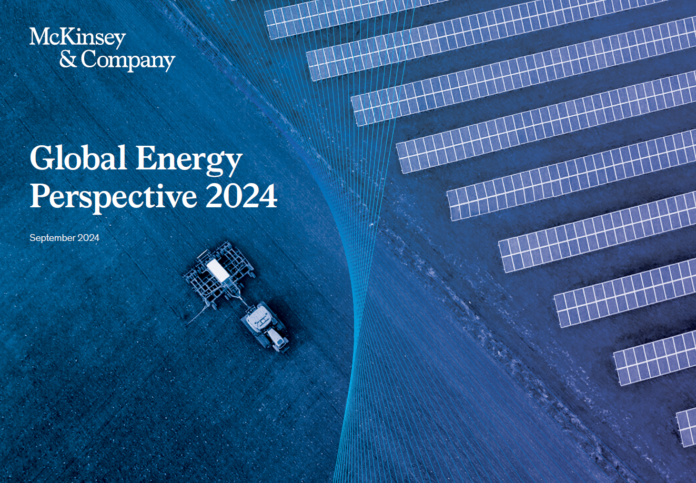Welcome, dear readers, to insidernews.blog! We’re excited to bring you another insightful piece that matters to you. As always, we’ve done the research so you can stay informed without the hassle. Today, we dive into a critical issue—the Global Energy Perspective 2024, shedding light on the future of energy and the paths ahead. Whether you’re an energy enthusiast or a curious mind, this is your go-to guide for understanding the latest energy trends. Let’s dive in!
The Global Energy Perspective 2024, a comprehensive report from McKinsey’s Energy Solutions team, presents a detailed look at the changing dynamics of the energy market. This year’s report is especially significant as it explores how rising geopolitical tensions, supply chain challenges, and increased inflation are reshaping the global energy transition.
At the heart of the report are three key scenarios, each mapping out a different path to 2050:
- Sustainable Transformation: This scenario imagines a future where global coordination is the driving force for decarbonization. Countries intensify their efforts to clear bottlenecks and invest in low-carbon technologies. If this path unfolds, we could see global temperatures rise by just 1.8°C by 2050—on track to meet the targets set by the Paris Agreement.
- Continued Momentum: In this middle-ground scenario, nations balance sustainability with the need for energy security and affordability. While progress is made, it isn’t enough to hit climate targets, leading to a temperature increase of around 2.2°C by 2050.
- Slow Evolution: Here, countries focus more on domestic priorities, such as energy affordability and supply security, rather than global decarbonization. This fragmented approach results in slower investment in clean energy and, consequently, a 2.6°C rise in global temperatures by 2050.
Each of these scenarios offers a different view of the future. Which one do you believe is the most likely outcome? More importantly, which should we strive for?
Fossil Fuels: A Lingering Necessity
Despite the focus on renewables, fossil fuels will continue to play a substantial role in meeting global energy demand—accounting for 40% to 60% of energy by 2050, depending on the scenario. Even in the best-case outlook, transitioning entirely away from fossil fuels will take decades.
But here’s the catch—while renewables like wind and solar are growing rapidly, they alone won’t be enough to meet rising energy needs. The report points out that we’ll still need natural gas and nuclear energy to provide stability, particularly as demand fluctuates with renewable supply.
Does this reliance on fossil fuels mean we’re doomed to miss our climate targets? Not necessarily—but it does mean that we need to push harder on policies and technologies that can bridge the gap. What do you think? Should the world be investing even more heavily in renewable energy, or is a balanced approach the only realistic path?
The Role of Technology and Investment
One of the most crucial insights from the Global Energy Perspective 2024 is the need for massive investments in infrastructure and technology to drive the energy transition. While solar and wind power are expected to lead the way, other technologies—like hydrogen, carbon capture, and even nuclear power—will play essential supporting roles.
But financing these technologies is no small feat. To stay on track for net-zero emissions by 2050, we need trillions of dollars in new investment. In particular, next-generation nuclear technologies, such as small modular reactors, show promise, but they face significant regulatory hurdles.
Investors are also increasingly concerned about the costs of low-carbon projects, which can deter investment. Higher interest rates and geopolitical uncertainty have added to the hesitation. Should governments step in to boost investor confidence? Or should the private sector take the lead in financing these ambitious projects?
Conclusion: The Future is Ours to Shape
The Global Energy Perspective 2024 offers a sobering, yet hopeful look at the energy future. While the road ahead is fraught with challenges, from reliance on fossil fuels to the need for unprecedented levels of investment, it’s clear that the choices we make today will determine the kind of world we leave for future generations.
What do you think is the most critical factor in shaping our energy future—technology, policy, or investment? We’d love to hear your thoughts, so join the conversation in the comments below.
Thank you for reading insidernews.blog. We’re committed to bringing you news that matters, explained in a way that resonates. Got thoughts on this piece? Drop a comment below—we’d love to hear from you!




